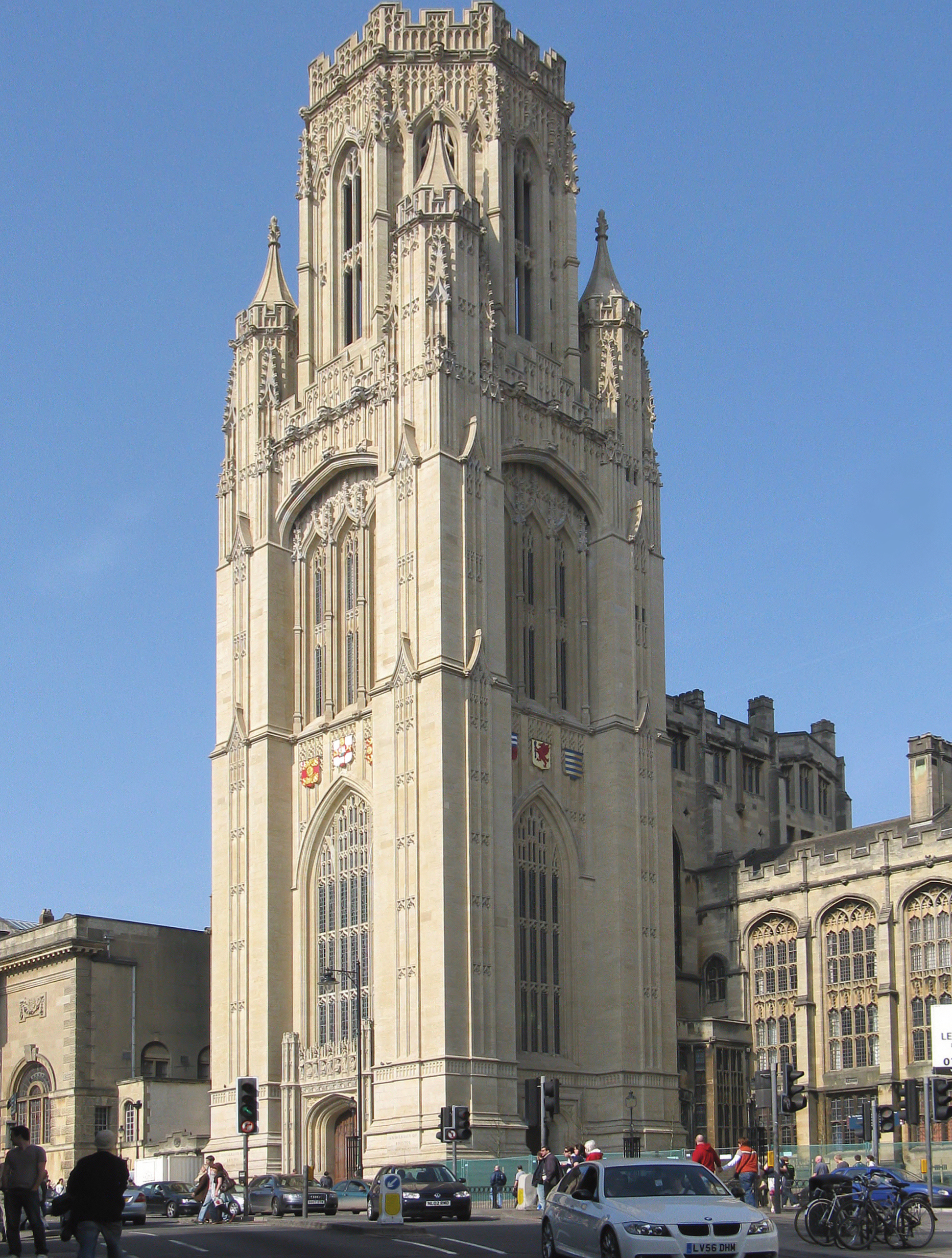|
Forlorn Hope Estate
The Forlorn Hope Estate is an area of Bristol in St_Pauls,_Bristol, St Paul's. The 13-acre estate was originally a farm owned by St_Nicholas_Church,_Bristol, St Nicholas Church vestry from 1693. At that time it consisted of a main dwelling house, stables, associated buildings and gardens of , plus fields of . By 1828 the estate had been divided into a number of smaller properties and gardens. During the 1870s the estate was then thoroughly redeveloped, with a new road layout, as part of the urban development of Bristol. The 'Forlorn Hope Estate' was a separate charity until 2004, the assets now being part of St Nicholas with St Leonard Educational Charity. As such, it still exists as a legal entity, with the proceeds of the estate being employed for religious education in schools and youth organisations within the Bristol. The Pest House In December 1665 the main property on the estate, the ‘house called the Forlorne Hope’, was leased by the Corporation along with its lands ... [...More Info...] [...Related Items...] OR: [Wikipedia] [Google] [Baidu] |
Forlorn Hope Estate, 1828
{{Short pages monitor ... [...More Info...] [...Related Items...] OR: [Wikipedia] [Google] [Baidu] |
University Of Bristol
The University of Bristol is a Red brick university, red brick Russell Group research university in Bristol, England. It received its royal charter in 1909, although it can trace its roots to a Society of Merchant Venturers, Merchant Venturers' school founded in 1595 and University College, Bristol, which had been in existence since 1876. Bristol is organised into #Academic structure, six academic faculties composed of multiple schools and departments running over 200 undergraduate courses, largely in the Tyndalls Park area of the city. The university had a total income of £752.0 million in 2020–21, of which £169.8 million was from research grants and contracts. It is the largest independent employer in Bristol. Current academics include 21 fellows of the Academy of Medical Sciences, 13 fellows of the British Academy, 13 fellows of the Royal Academy of Engineering and 44 fellows of the Royal Society. Among alumni and faculty, the university counts 9 Nobel laureates. Bristol is ... [...More Info...] [...Related Items...] OR: [Wikipedia] [Google] [Baidu] |
Isolation (health Care)
In health care facilities, isolation represents one of several measures that can be taken to implement in infection control: the prevention of communicable diseases from being transmitted from a patient to other patients, health care workers, and visitors, or from outsiders to a particular patient ( reverse isolation). Various forms of isolation exist, in some of which contact procedures are modified, and others in which the patient is kept away from all other people. In a system devised, and periodically revised, by the U.S. Centers for Disease Control and Prevention (CDC), various levels of patient isolation comprise application of one or more formally described "precaution". Isolation is most commonly used when a patient is known to have a contagious ( transmissible from person-to-person) viral or bacterial illness. Special equipment is used in the management of patients in the various forms of isolation. These most commonly include items of personal protective equipment ( ... [...More Info...] [...Related Items...] OR: [Wikipedia] [Google] [Baidu] |
Quarantine Facilities
A quarantine is a restriction on the movement of people, animals and goods which is intended to prevent the spread of disease or pests. It is often used in connection to disease and illness, preventing the movement of those who may have been exposed to a communicable disease, yet do not have a confirmed medical diagnosis. It is distinct from medical isolation, in which those confirmed to be infected with a communicable disease are isolated from the healthy population. Quarantine considerations are often one aspect of border control. The concept of quarantine has been known since biblical times, and is known to have been practised through history in various places. Notable quarantines in modern history include the village of Eyam in 1665 during the bubonic plague outbreak in England; East Samoa during the 1918 flu pandemic; the Diphtheria outbreak during the 1925 serum run to Nome, the 1972 Yugoslav smallpox outbreak, the SARS pandemic, the Ebola pandemic and extensive quara ... [...More Info...] [...Related Items...] OR: [Wikipedia] [Google] [Baidu] |
Plague (disease)
Plague is an infectious disease caused by the bacterium ''Yersinia pestis ''Yersinia pestis'' (''Y. pestis''; formerly '' Pasteurella pestis'') is a gram-negative, non-motile, coccobacillus bacterium without spores that is related to both '' Yersinia pseudotuberculosis'' and '' Yersinia enterocolitica''. It is a facu ...''. Symptoms include fever, weakness and headache. Usually this begins one to seven days after exposure. There are three forms of plague, each affecting a different part of the body and causing associated symptoms. Pneumonic plague infects the lungs, causing shortness of breath, coughing and chest pain; bubonic plague affects the lymph nodes, making them swell; and septicemic plague infects the blood and can cause tissues to necrosis, turn black and die. The bubonic and septicemic forms are generally spread by flea bites or handling an infected animal, whereas pneumonic plague is generally spread between people Airborne disease, through the air via infectio ... [...More Info...] [...Related Items...] OR: [Wikipedia] [Google] [Baidu] |
River Frome, Bristol
The Frome , historically the Froom, is a river that rises in Dodington Park, South Gloucestershire, and flows southwesterly through Bristol to join the river Avon. It is approximately long, and the mean flow at Frenchay is . The name ''Frome'' is shared with several other rivers in South West England and means 'fair, fine, brisk'. The river is known locally in east Bristol as the ''Danny''. As with many urban rivers, the Frome has suffered from pollution, but several stretches run through parks and reserves that sustain a range of wildlife. The river's power was harnessed by many watermills, and the river mouth area was developed as shipyards by the eighteenth century. As the city of Bristol developed in the nineteenth and twentieth centuries, flooding became a major problem, remedied by the construction of storm drains and diversions. Etymology The river's name derives from the British Celtic, meaning 'fair, fine, brisk’. It is not to be confused with other rivers in ... [...More Info...] [...Related Items...] OR: [Wikipedia] [Google] [Baidu] |
Forlorn Hope
A forlorn hope is a band of soldiers or other combatants chosen to take the vanguard in a military operation, such as a suicidal assault through the kill zone of a defended position, or the first men to climb a scaling ladder against a defended fortification, where the risk of casualties is high. Such a band is also known as the (). Etymology The term comes from the Dutch , literally 'lost heap'. The term was used in military contexts to denote a troop formation. The Dutch word (in its sense of 'heap' in English) is not cognate with English 'hope': this is an example of folk etymology. The translation of as "forlorn hope" is "a quaint misunderstanding" using the nearest-sounding English words. This folk etymology has been strengthened by the fact that in Dutch, the word is a homograph meaning "hope" as well as "heap", although the two senses have different etymologies. History In the German mercenary armies of the , these troops were called the , which has the same mea ... [...More Info...] [...Related Items...] OR: [Wikipedia] [Google] [Baidu] |
William Sermon
William Sermon (–1679) was an English physician and medical writer. Life Career William Sermon, born probably in 1629, was "nearly related" to one Edmond Sermon, a native of Naunton-Beauchamp, Worcestershire. He seems to have gained his first medical experience "in the armies". About April 1666 his "occasions" called him to Bristol, "and the physicians there leaving the city", owing to the plague, he was, by desire of the mayor, "shut up at the Mermaid Tavern upon the Back, and after that at Mr. Richard Winstone's house in the county of Gloucester, near the city aforesaid, in which infected houses", he says, "I continued the space of three months, and cured all of the Pest that took my Directions". He now obtained "a sufficient practice upon the worst of diseases", and remained at Bristol till 8 June 1669, when he was summoned to Newhall in Essex to attend George Monck, Duke of Albemarle, for dropsy. On 12 July Monck gave him a certificate of his cure, and Charles I ... [...More Info...] [...Related Items...] OR: [Wikipedia] [Google] [Baidu] |
Bristol
Bristol () is a city, ceremonial county and unitary authority in England. Situated on the River Avon, it is bordered by the ceremonial counties of Gloucestershire to the north and Somerset to the south. Bristol is the most populous city in South West England. The wider Bristol Built-up Area is the eleventh most populous urban area in the United Kingdom. Iron Age hillforts and Roman villas were built near the confluence of the rivers Frome and Avon. Around the beginning of the 11th century, the settlement was known as (Old English: 'the place at the bridge'). Bristol received a royal charter in 1155 and was historically divided between Gloucestershire and Somerset until 1373 when it became a county corporate. From the 13th to the 18th century, Bristol was among the top three English cities, after London, in tax receipts. A major port, Bristol was a starting place for early voyages of exploration to the New World. On a ship out of Bristol in 1497, John Cabot, a ... [...More Info...] [...Related Items...] OR: [Wikipedia] [Google] [Baidu] |
Great Plague Of London
The Great Plague of London, lasting from 1665 to 1666, was the last major epidemic of the bubonic plague to occur in England. It happened within the centuries-long Second Pandemic, a period of intermittent bubonic plague epidemics that originated in Central Asia in 1331 (the first year of the Black Death), and included related diseases such as pneumonic plague and septicemic plague, which lasted until 1750. The Great Plague killed an estimated 100,000 people—almost a quarter of London's population—in 18 months. The plague was caused by the '' Yersinia pestis'' bacterium, which is usually transmitted through the bite to a human by a flea or louse. The 1665–66 epidemic was on a much smaller scale than the earlier Black Death pandemic. It became known afterwards as the "great" plague mainly because it was the last widespread outbreak of bubonic plague in England during the 400-year Second Pandemic. London in 1665 The plague was endemic in 17th-century London, as ... [...More Info...] [...Related Items...] OR: [Wikipedia] [Google] [Baidu] |






